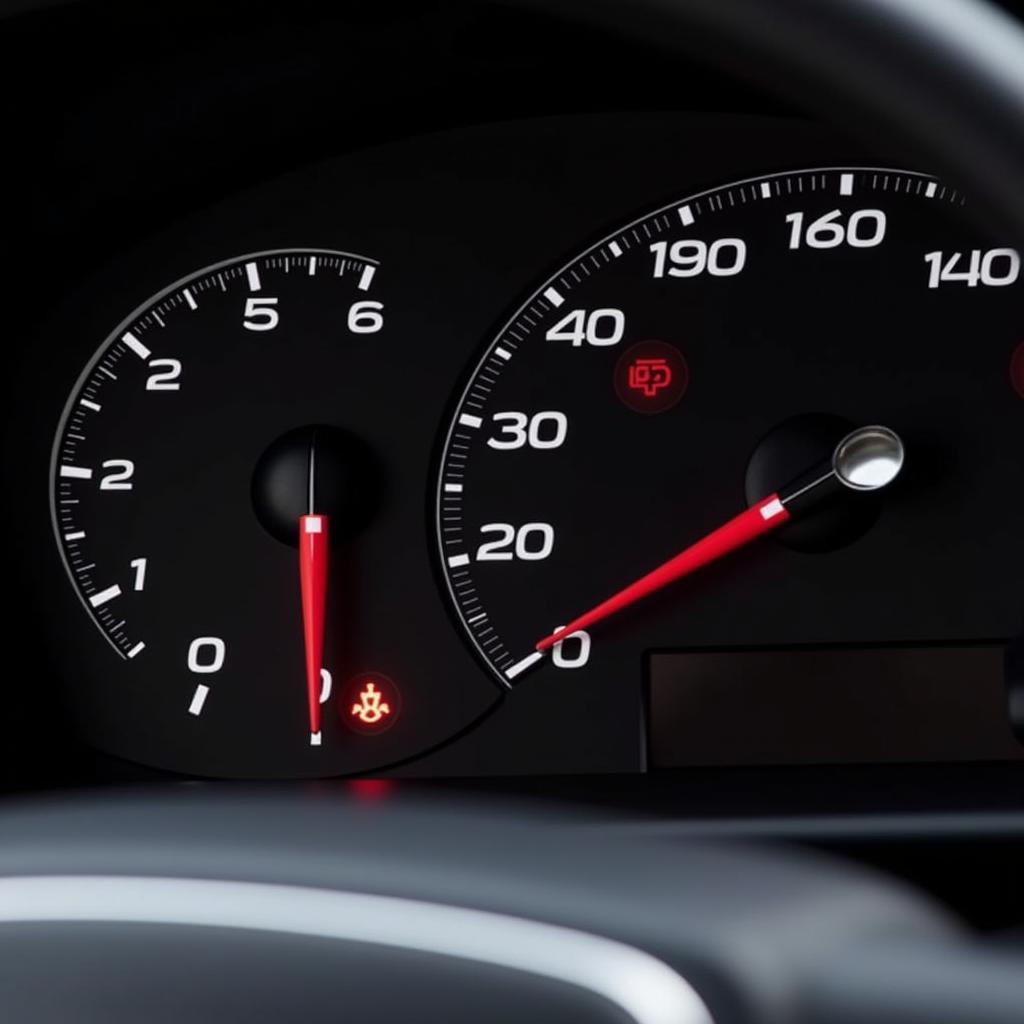If your Silverado’s warning lights illuminate when you apply the brakes, it’s a crucial signal demanding immediate attention. This issue can range from minor inconveniences to serious safety hazards, making a swift diagnosis essential. This article delves into the common causes behind this problem, providing valuable insights and potential solutions to help you get back on the road safely.
Understanding the Warning Light Symphony
When you hit the brakes in your Silverado, and warning lights flash on the dashboard, it indicates a potential problem within your braking system or related components. These lights can include the ABS (Anti-lock Braking System) light, the brake light, the traction control light, or even the check engine light. Each light provides a clue to the underlying issue, and understanding their meaning is the first step towards resolving the problem.
Common Culprits Behind Silverado Brake Warning Lights
Several factors can trigger warning lights when braking in a Silverado. One common culprit is low brake fluid. Brake fluid is the lifeblood of your braking system, and low levels can significantly compromise braking performance. Another frequent issue is worn brake pads. As brake pads wear down, they can trigger sensors that illuminate warning lights. A faulty ABS sensor can also be the source of the problem. These sensors monitor wheel speed and help prevent wheel lockup during braking. A malfunctioning sensor can send erroneous signals, causing the warning lights to come on.
Other potential causes include a failing brake master cylinder, a problem with the brake booster, or even a faulty brake light switch. Identifying the specific cause requires a systematic approach and, in some cases, professional diagnostic tools.
Diagnosing the Problem: A Step-by-Step Guide
-
Check the brake fluid level. Locate the brake fluid reservoir under the hood and check the fluid level. If it’s low, add brake fluid to the recommended level.
-
Inspect the brake pads. Visually examine the brake pads through the wheel spokes. If they appear thin or worn, they likely need replacement.
-
Check the brake lights. Have someone press the brake pedal while you check if the brake lights are working correctly. If they’re not, the problem might be a faulty brake light switch.
-
Scan for diagnostic codes. Use an OBD-II scanner to read diagnostic trouble codes (DTCs) stored in the vehicle’s computer. These codes can pinpoint the specific area causing the warning lights.
-
Seek professional help. If you’ve tried the above steps and the problem persists, it’s time to consult a qualified automotive technician. They have the expertise and equipment to diagnose and repair complex braking system issues.
Remote Diagnostics and Software Solutions
In some cases, remote diagnostics and software solutions can address the underlying issue. This involves connecting your Silverado to a specialized diagnostic tool that allows a technician to access the vehicle’s computer remotely. They can then analyze data, identify the problem, and even perform software updates or reprogramming to resolve certain issues.
“Remote diagnostics are becoming increasingly valuable in the automotive industry,” says John Smith, Senior Automotive Diagnostic Technician at ABC Auto Repair. “It allows us to diagnose and, in some instances, repair problems without the customer having to bring their vehicle into the shop.”
Preventing Future Problems
Regular maintenance is crucial to prevent future brake warning light issues. This includes routine brake inspections, timely brake pad replacements, and keeping the brake fluid at the recommended level.
“Preventive maintenance is always the best approach,” adds Maria Garcia, Lead Technician at XYZ Auto Services. “Regular checks can prevent small problems from escalating into major, costly repairs.”
Conclusion
When your Silverado warning lights come on when you push brakes, it’s a call to action. Ignoring these warnings can lead to serious safety risks. By understanding the common causes, following the diagnostic steps, and seeking professional help when needed, you can address the issue effectively and keep your Silverado running smoothly and safely.
FAQ
-
What does it mean when my ABS light comes on when I brake? This usually indicates a problem with the Anti-lock Braking System.
-
Can low brake fluid cause warning lights to come on? Yes, low brake fluid is a common cause of brake warning lights.
-
How often should I check my brake pads? It’s recommended to check your brake pads every 10,000 to 12,000 miles.
-
What should I do if my brake warning light stays on after adding brake fluid? This could indicate a more serious problem, and you should consult a mechanic.
-
Is it safe to drive with the brake warning light on? It depends on the specific light. It’s best to have the vehicle inspected as soon as possible.
-
Can remote diagnostics fix my Silverado brake problems? In some cases, yes. Remote diagnostics can identify software-related issues that can be resolved remotely.
-
How can I prevent brake warning light issues in the future? Regular brake inspections and maintenance are key to preventing future problems.

